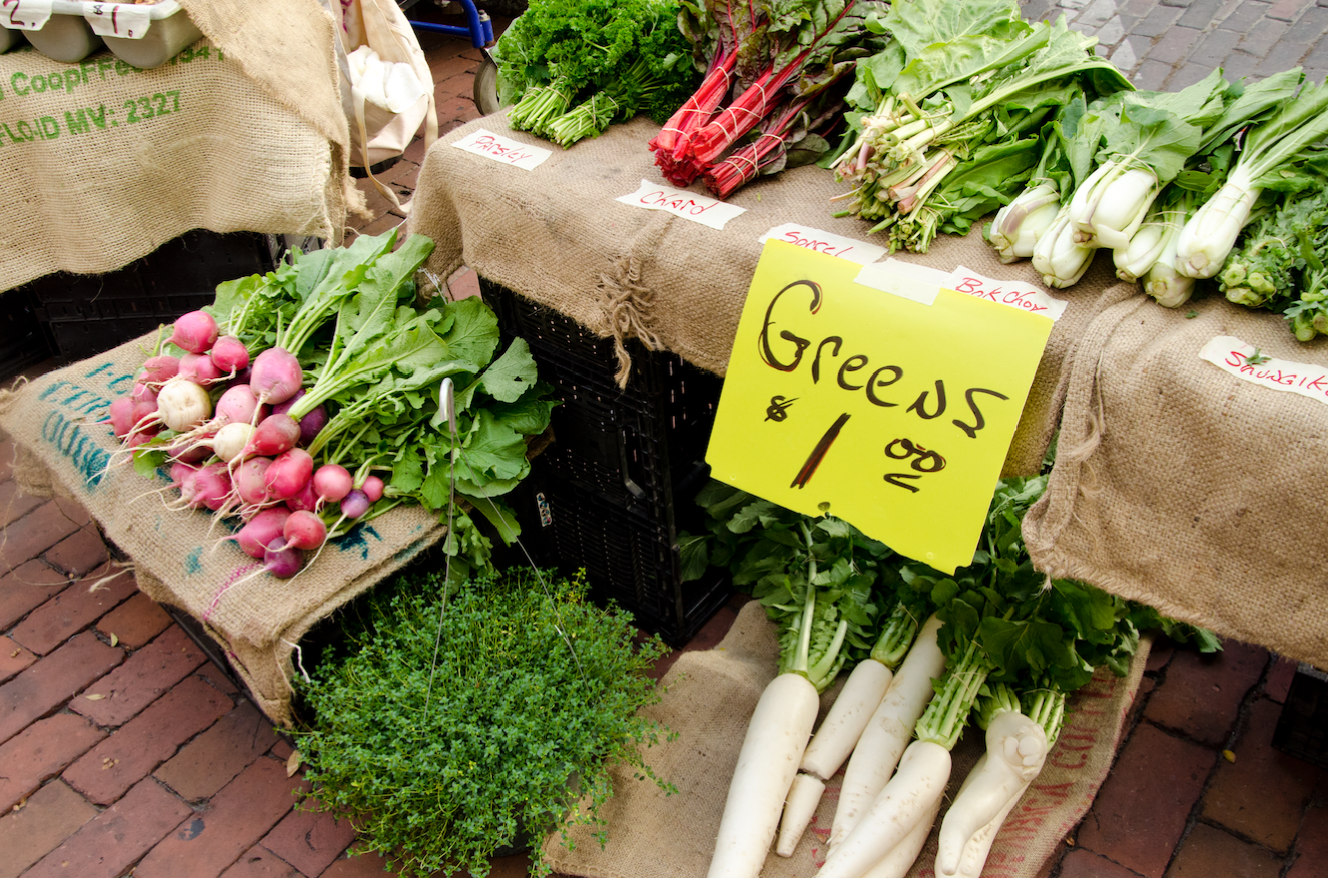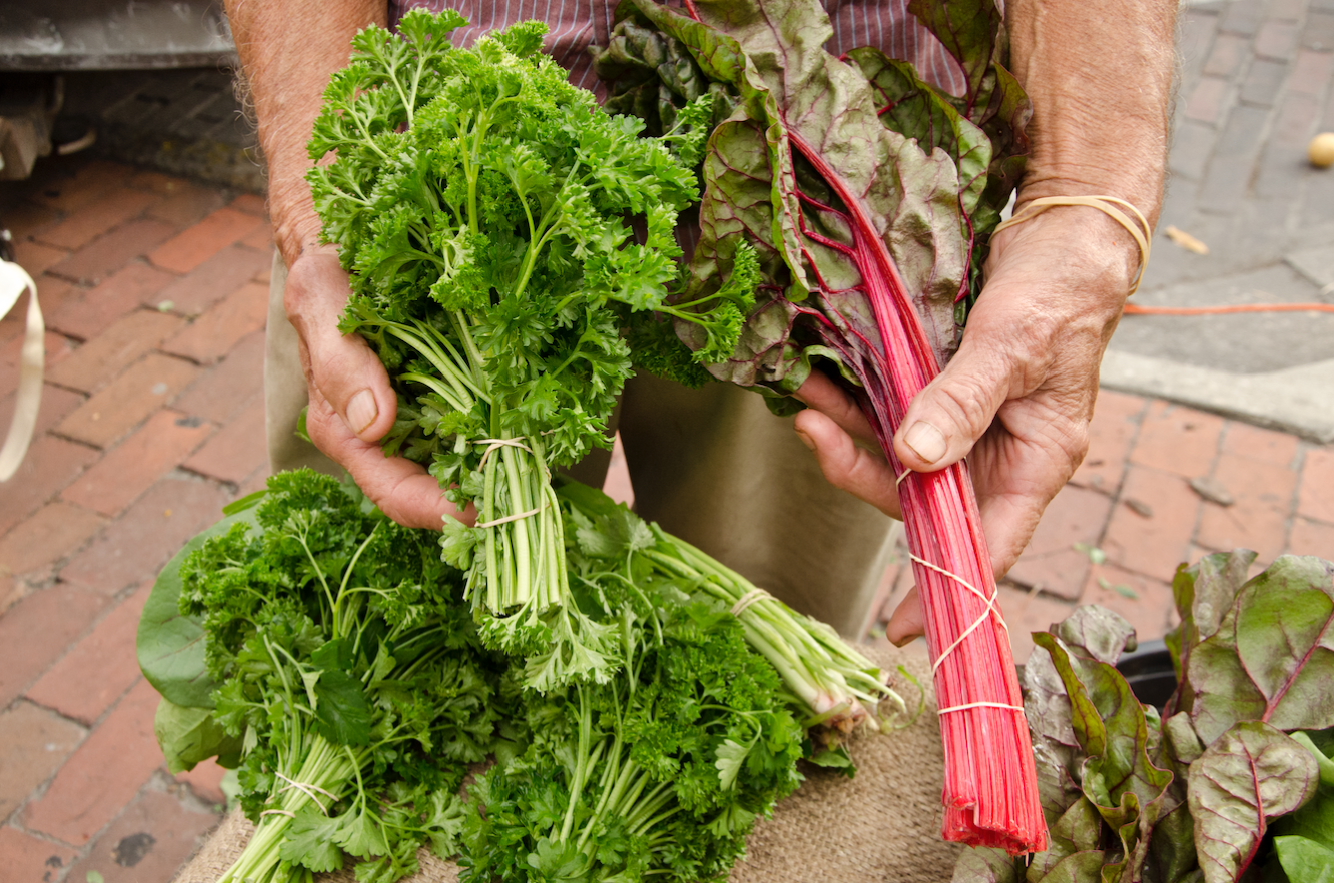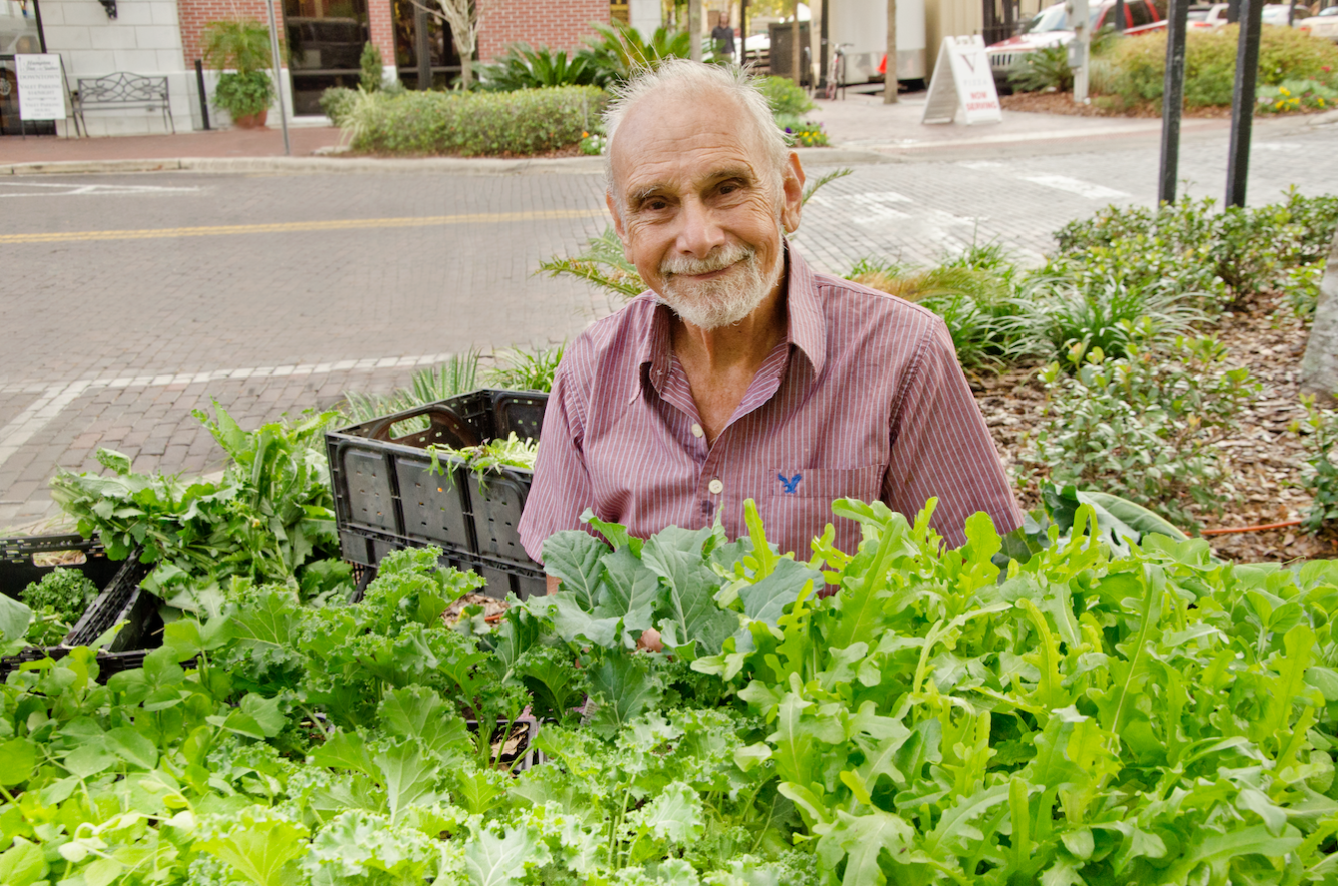By Ethan Bauer | Photos by Delia Albert
Amidst the hustle and bustle and surrounded by a sea of leafy greens, John Steyer sits in his usual spot at the Union Street Farmer’s Market. It’s the same spot he has been sitting in for the past 50 years.
Everyone at the market and around Bo Diddley plaza, where the market is held every Wednesday from 4–7 p.m., knows him. Right next to him is Pete, a fellow vendor who compliments his fantastic soil, which John has been farming for 50 years. Nearby at the library, librarians know his name and call it out as soon as he walks in. And at Faith Vietnamese Cuisine, a nearby restaurant, the owners know both his name and his order, even bringing him specialized utensils when he arrives. But to them, he’s not John Steyer.
He’s Farmer John.
“Everybody notices me,” he said.
The fact that the community knows him isn’t the only sign he’s been there for a long time, though. The 80-year-old’s skin is wrinkled and bronzed thanks to a life-long beating from the sun. Jagged white hairs dot his grizzled chin. And sitting right in his usual spot in the southwest corner of the market, he takes small, almost careful, bites of a sandwich.
Meanwhile, Krishna music blares in the background along with the intermingled voices of those at the market. In the middle of the bustle is Farmer John, a natural storyteller who loves to talk about his past.
He speaks passionately about his roots in farming, his professional life away from the fields and how, given the choice, he picked his farm over career advancement, going off on tangents whenever he remembers some new, interesting thing. But he also talks about how he’s seen local farming evolve — for better or worse — over the years.
One of Farmer John’s earliest memories involves gardening.
“I remember when I was digging my garden one time when I was real little,” he said, “so I had to choke way up on the shovel to hold it.”
As one of five siblings in a family that lived outside of Cleveland, Ohio, he also remembers competing to sell crops — among them squash, cucumbers, corn and tomatoes — to the neighbors when they’d honk their horns outside his home. Him and his siblings would race outside with baskets to try to be the first to sell something.

But for his family back then, farming was only recreational. And as a kid who loved both gardening and playing in the woods, he wanted it to be more.
“I was waiting all my life to live on my own farm,” he said.
He got that chance in 1959 when he moved to Florida, ultimately settling in Starke on a 20-acre property. There, he sold plants and crops — from squash to flowers to various greens — to local flea markets and grocery stores. And over the years, the way he’s sold his product has fluctuated.
When he first started, he remembers that most farmers were growing a whole bunch of very specific crops. You could go to a farmers market, he said, and find many farmers selling one or two vegetables.
Farmer John didn’t want to be like that.
After being inspired by Wal-Mart founder Sam Walton, whose mission, according to Farmer John, was to create a store that had something for everyone, he diversified the types of plants he sold. He said that himself aside, that’s been the trend as of late.
“The guy that’s selling fish,” he said, referring to another vendor, “he’s got a bunch of greens on his table.”
The most significant change he’s noticed on the selling side, though, is the near disappearance of locally grown produce in stores and restaurants. For example, he said he used to sell to a Winn-Dixie supermarket about seven miles from his home. But as the corporation evolved, it started buying exclusively from much largerscale farms.
As a result, he said the only way he can still sell to Winn-Dixie and other large chain grocery stores is to ship his produce somewhere — in the case of Winn Dixie, to Jacksonville — from where it then gets distributed. However, he said having to sit in the warehouse damages the quality of the product.
“The quality of the vegetables people buy nowadays,” he said, “are very, very less than they used to be.”
That isn’t just limited to supermarkets, though. Farmer John also expressed concern over the quality of produce in restaurants, though he seemed more understanding in that area. For example, he said he could understand why a chef would want to buy lettuce of a uniform size, shape and color from a larger farm as opposed to something he’d grown.
“It wouldn’t fit in his mode of preparing,” he said of a chef having to use imperfect produce from local farmers.
Still, he advocated for the health benefits of buying local produce — either by supermarkets, restaurants or people themselves — and expressed regret that it doesn’t happen as much anymore.
“There’s hardly anybody left in Gainesville doing local stuff,” he said.
Like every question posed to Farmer John, the question of how his farm, Little Bit Nursery, got its name leads to a story.
Years ago (so many that he has no idea when exactly it happened), he mentored a young girl who he said was depressed. She was the daughter of some of his friends, and she helped Farmer John on his farm. Her nickname was Little Bit, so Farmer John named the nursery after her. The name has stuck ever since.
But while the name has remained constant, over the years, Farmer John’s farming practices have changed.
Back when he started, he said he would go to a now-nonexistent store and pick up a bag of parathion dust, a potent insecticide. He would then spray it all over his crops to kill off unwanted bugs.
That same dust is now banned in 12 countries, according to the Food and Agriculture Organization of the United Nations, with the United States imposing strict regulations to avoid exposure of the dust to workers in 1992.
“I’d walk through it and I’d be covered with it,” Farmer John said. “Nobody said anything about it. Everybody in the whole community was doing the same thing.”
Similar regulations took effect on other pesticides. Nowadays, Farmer John said he uses concoctions of natural bacteria, hydrogen peroxide and other less hazardous substances. Aside from the shift in how he sells his product, that’s the other big change he’s noticed in his 50+ years of working the land: The implementations of more regulations.
“There was not many at all,” he said of when he started.
Regardless of regulations, though, Farmer John is content to adapt to new practices whenever necessary as long as he can keep tending to the fields.
“He likes plants more than people,” said Melanie Engle, a UF student who helps Farmer John at the Union Street Farmer’s Market. “Definitely.”

Farmer John has lived on his 20 acres of land long enough to see an entire forest grow, literally.
Years ago, part of his land was cow pasture. But he got rid of the cows and stopped worrying about the land, which was then overtaken by weeds for several years. “It was so thick with weeds you couldn’t walk through it,” he said.
Suddenly he said those weeds were overtaken by wild blackberry bushes, which were then overtaken by myrtle bushes, which were then overtaken by pine trees, thus restoring the cow pasture to what it once was. And it only took about 15 years.
“People say, ‘Plant trees, plant trees!’” he said. “Just don’t mow, and the trees will come.”
With the re-forested area of his 20 acres restored to its former self, Farmer John said he only uses about two acres to grow his crops — leafy greens like collards, broccoli and cabbage in the winter and tropical plants like turmeric in the summer — which he then sells at the Union Street Farmers Market as well as the Alachua County Farmers Market and Ward’s Supermarket, where he’s been selling plants and crops for longer than he can remember.
Watching the forest re-grow reminded Farmer John to listen to nature, he said, which is exactly what he’s been doing for all his years of farming. Despite changes in the way he sells his products as well as increased regulations prohibiting certain substances from aiding his plants’ growth, that facet of his work has remained the same.
And it’s what motivates him to keep hauling his harvest out to farmers markets every week, no matter the weather.
“You should have a job,” he said, “where you do something you enjoy doing.”

